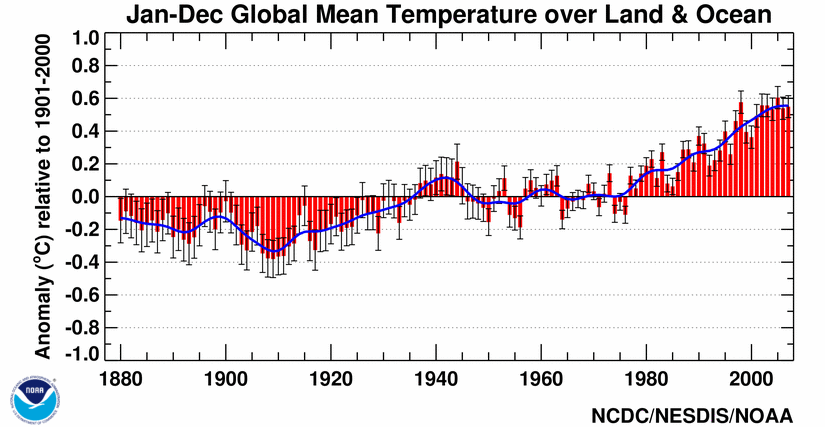Travis Berge and Oscar Jorda of the University of California, Davis have an interesting new paper on statistical criteria for distinguishing economic expansions from recessions.
Assessing the Impact of Government Policy on Widget Consumption and Widget Sector Capital Usage
Let supply and demand for widgets (y) be given by the following two equations, respectively:
(1) yt = αt + β x t + ε t
(2) yt = γ + δ x t + Γ z t + u t
The Global Surface Temperature Anomaly
Commodity inflation
Why are the prices of so many commodities rising in an economy that seems to remain quite weak?
Politico Does Economic Analysis…
Be afraid; be very afraid.
From “‘Created or saved’ doesn’t add up”, by Joseph Lawler:
…[t]he “created or saved” numbers are meaningless. The administration purposefully devised the metric to be nebulous. Without a counterfactual, showing the trend of unemployment in the absence of the stimulus, it is impossible to know how many jobs the stimulus saved.
Will rising oil prices derail the recovery?
Last April I described new research on the role of oil prices in the recent recession. Here’s an update on what’s happened since then.
“Where’s the Consumption Disaster?”
Casey Mulligan asks:
So a year later, in September 2009, after living through a year of “disaster,” how did real consumption expenditure (one economists’ favorite measures of living standards) compare to what it was in September 2008?
Guest Contribution: The Liquidity Trap Does Not Make Monetary Policy Ineffective
By Joseph E. Gagnon
Today, we’re fortunate to have Joe Gagnon, senior fellow at the Peterson Institute for International Economics, as a guest contributor.
Consequences of the Lehman failure
William Sterling of Trilogy Global Advisors has an interesting new paper on the abrupt changes in financial markets subsequent to Lehman’s bankruptcy on September 15, 2008.
Some Thoughts Elicited by Reading Some Calibration Papers
(Warning: Might be considered “wonky” by some) In many economic analyses, one wants to isolate the “business cycle” component of macroeconomic series. Here is one such series, which has had a detrending technique applied to it. Try to guess what it is.
